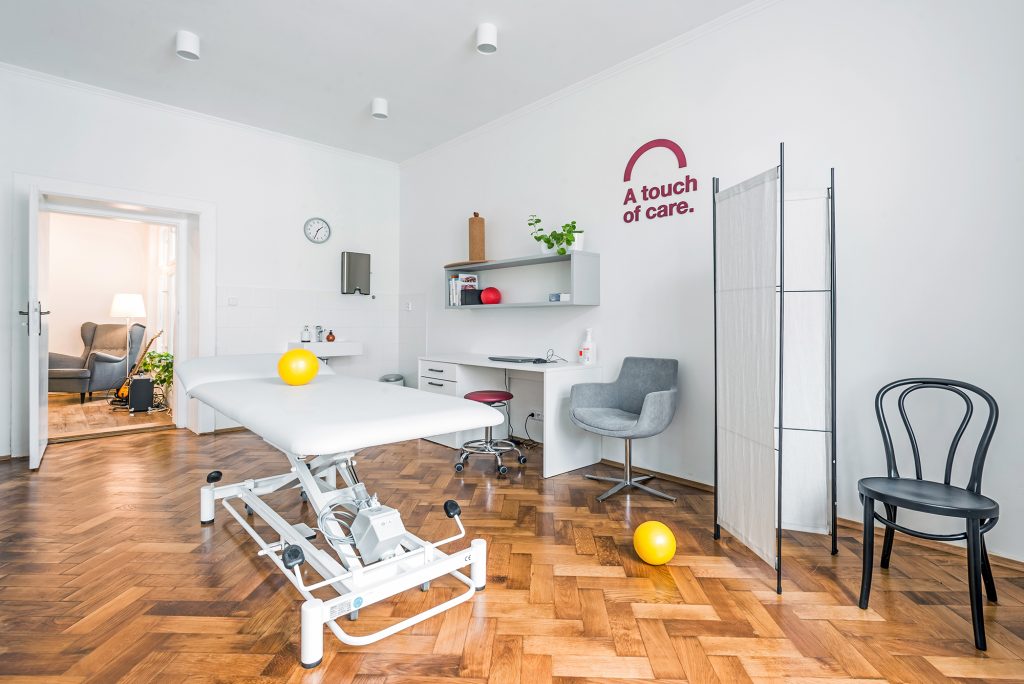Heartburn, or Pyrosis – Will Physiotherapy Help?
Heartburn, also known as pyrosis, occurs as a result of gastroesophageal reflux (GER) or gastroesophageal reflux disease (GERD). In this condition, acidic stomach contents flow back into the lower esophagus and return to the stomach. The stomach acids irritate the lining of the esophagus, causing pyrosis – an unpleasant, painful burning sensation or pressure behind the breastbone. This typically occurs at night during sleep or after meals. If the esophageal lining is continuously irritated by stomach acids, serious damage may occur. This can lead to esophagitis, where the inner lining of the esophagus changes, potentially resulting in ulcers or cancerous cells.
How Does GER and GERD Develop?
Some sources suggest that GER is a precursor to gastroesophageal reflux disease (GERD).
Food is broken down in the mouth, swallowed, and then sent to the esophagus. The food is pushed down the esophagus to the stomach by rhythmic (peristaltic) contractions. The esophagus is a long muscular tube that begins at the upper cervical vertebrae and ends at the lower thoracic spine. At its lower end, it passes through the diaphragm, an important muscle that connects to the stomach, which is in direct contact with the diaphragm. The diaphragm is a dome-shaped muscle at the bottom of the chest cavity and is the primary muscle involved in breathing, though it has other functions as well. Together with the esophagus, it forms the main anti-reflux barrier.
At the lower end, the smooth muscles of the esophagus and the striated muscles of the diaphragm form a crucial functional unit – the lower esophageal sphincter. This ensures a secure “closure” between the sensitive esophageal lining and the aggressive stomach acid. One of the main reasons GER and GERD develop is the insufficient function of the lower esophageal sphincter.
Acidic Environment Can Irritate the Airways
It is worth mentioning the connection between GER and bronchial asthma. GER can be a trigger for an asthma attack. When stomach acid reaches the esophagus, it irritates the nerve endings in the esophageal lining, leading to reflexive bronchial irritation. If stomach acid reaches the bronchial tubes through the mouth, the airways may constrict defensively. Both scenarios can cause coughing or shortness of breath in a client. GER is very common in patients with bronchial asthma, occurring up to three times more often than in the general population. Reflux may contribute to breathing difficulties in patients whose asthma does not respond adequately to standard treatment. In such cases, treatment must focus on both asthma and GER.
What Causes GERD?
The most common causes include:
- Abnormally increased intra-abdominal pressure, caused by obesity, pregnancy, or extreme physical exertion (sports, lifting heavy furniture)
- Poor breathing patterns – upper chest breathing where the diaphragm does not function properly
- Poor coordination of abdominal muscles (after childbirth or abdominal surgery, muscle weakening)
- Other organ dysfunctions that increase intra-abdominal pressure
- Insufficient production of hydrochloric acid in the stomach (affects up to 60% of the population, deficiency of certain micronutrients, especially zinc)
- Overgrowth of Helicobacter Pylori
- Frequent eating (short intervals between meals)
- Chronic stress, eating under stress
- Hidden food intolerances
A lesser-known cause may be food allergies or intolerances, such as celiac disease. Most food intolerances manifest in the small intestine, where digestion and nutrient absorption occur. If the small intestine is irritated by an intolerance, it becomes inflamed and increases tension. This tension restricts the movement of food from the stomach, increasing pressure on the lower esophageal sphincter, which then stops functioning properly.
Symptoms of GERD:
- Pyrosis – heartburn, a burning sensation in the throat or chest
- Pressure behind the breastbone
- Pain or pressure between the shoulder blades
- Coughing, breathing difficulties
- Frequently misdiagnosed bronchial asthma
- Sensation of food being stuck in the throat
- Loss of appetite, difficulty digesting meat and fat
- Stomach cramps, bloating
- Skin rashes
- Note: Be careful not to confuse these symptoms with those of a heart attack. If sudden, severe chest pain occurs along with pain radiating to the arm, rapid breathing, and feelings of anxiety, it is important to seek medical attention immediately (primary care physician, cardiologist, or emergency room).
In some cases, GERD can remain hidden for a long time, presenting with “nonspecific” symptoms such as poorly localized chest or shoulder pain. Not all of the symptoms listed above need to be present at once.
How is GERD Diagnosed?
GERD is diagnosed by a specialist – a gastroenterologist. The most common test is a 24-hour esophageal pH monitoring, where a thin probe is inserted through the nose into the esophagus to record the pH (acidity) level for 24 hours while the patient continues their usual activities and diet. Another test is esophageal manometry, which measures the swallowing action by inserting a probe through the nose to the lower esophageal sphincter. Both test results are evaluated to confirm the diagnosis.
Standard Treatment
Standard treatment usually involves prescribing medications to reduce stomach acid, aiming to decrease its erosive effect on the esophagus. Commonly prescribed are antacids, histamine receptor antagonists, and proton pump inhibitors. Patients often take these medications long-term, but their side effects are not always widely discussed. Stomach acid plays an essential role in the body, and suppressing its production can lead to impaired nutrient absorption, weakened immune defenses, and overgrowth of bacteria like Helicobacter Pylori. Long-term medication use can also contribute to bone thinning.
Long-term pharmacological treatment unfortunately does not address the root cause of the disease; it only alleviates symptoms and comes with several side effects. After stopping the medication, decreased stomach acid production often persists, leading to further complications.
Symptoms of Low Stomach Acid:
- Low appetite
- Loss of desire for meat and animal products
- Heaviness after eating
- Excessive burping, bloating
- Stomach cramps
- More frequent infections
- Heartburn and reflux (paradoxically)
- Diarrhea and undigested food in stool
- Helicobacter Pylori infection
- Weak nails
If medications do not help, surgery may be considered, but it also has its limitations. There is no guaranteed success with surgery, and in many cases, patients still need to continue taking medications afterward.
J
How Can a Physiotherapist Help?
There is also a conservative treatment option – through properly guided physiotherapy and lifestyle adjustments. In practice, physiotherapy is sometimes combined with short-term pharmacological treatment. GERD is a multifactorial condition from a physiotherapy perspective, and therefore an individual assessment of the patient’s condition and thorough physiotherapeutic examination are essential.
From a physiotherapy standpoint, three basic causes of GERD include:
- Dysfunction of the diaphragm
- Dysfunction of organ peristalsis and increased intragastric pressure
- Increased intra-abdominal pressure
The core of physiotherapy is to teach the patient proper diaphragmatic breathing to strengthen the function of the lower esophageal sphincter. Therapy may include techniques such as visceral manipulation, organ mobilization, and reflex support of peristalsis. We also work on joint mobilization, respiratory physiotherapy, and fascial manipulation. It is crucial to focus on overall posture, which directly affects the diaphragm’s function. For this, we often use exercises based on Dynamic Neuromuscular Stabilization (DNS).
Since the diaphragm is a striated muscle, it can be trained. At Fyzio Svět, we use breathing trainers like POWERbreathe, Threshold IMT, Threshold PEP, and EMST150. Each device allows resistance adjustment, making it suitable for children as well as elite athletes. Some are 75% covered by health insurance, so patients can own one and continue training at home.
10 Tips to Relieve Heartburn:
- Eat calmly and at regular times
- Eat less frequently – 2-3 meals a day
- Avoid foods that worsen heartburn (meaty and fatty foods, spicy spices, sometimes apples or tomatoes, wheat products)
- Avoid eating 2-3 hours before bedtime
- Include regular physical activity (walking, gentle exercise)
- Adjust your work posture if you have a sedentary job; focus on proper sitting and maintaining an upright spine position
- Learn to breathe properly, both at rest and during physical activity (link to an article on breathing)
- Use relaxation techniques to reduce stress
- Supplement missing micronutrients (especially zinc and B vitamins)
- If symptoms persist, seek professional help and get tested







